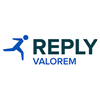In my last post, we briefly explored the importance of being agile to manage the change that has recently surged across the globe due to COVID-19.
New working conditions have forced us to rethink what productivity and connection look like how we define mobile and remote work. In this article we’ll look at three types of workgroups that have been impacted by the changing work environments. We will also share some tactics aligned with ADKAR to help flatten the change curve.
1. Small teams where working closely is critical to success.Small teams within many departments have been quickly scrambling to come up with digital work strategies and identify possible hardware/infrastructure/application needs to support virtual collaboration. These are fundamental considerations for unprepared organizations to rapidly create digital remote workspaces that can maintain minimum viable operations during this time of crisis.
- The Challenge- Some long-term employees may not clearly see the long-term advantages of the change, may not have the DESIRE to participate in the change if they believe it is only temporary and may not possess the proper knowledge and abilities to work in the new environment.
- Flattening the Change Curve: Once new tools and processes are selected, optimizing adoption for this type of team is best accomplished by the following:
- Continued, consistent clear and transparent communications to drive AWARENESS of the short and long-term roadmap and each employees’ responsibilities in supporting the roadmap. For example, leadership hosting town halls and company-wide meetings to discuss the transformation and overall vision.
- Visible executive-level and direct manager support of the changes that drives user DESIRE to continue supporting the new working environment. For example leadership being vocal and posting regular content to Yammer or the corporate Intranet about the change.
- Solicitation of feedback and recommendations from users, so that training and support post go-live, increase users KNOWLEDGE and ABILITY to effectively navigate the change. For example, create feedback forums with Yammer or Teams groups or send out surveys.
- Consistent executive-level appreciation and recognition for users fully adopting the changes to drive REINFORCEMENT. For example, virtual coffee or lunch with executives for those embracing the change and driving positive impacts to customers to discuss the changes one on one. Maybe even deliver lunch on the company for extra reward.
2. Large teams who may be more accustomed to disperse working conditions but still need to focus on working better together.This is actually the other end of the spectrum from our first scenario; it’s a space in which users can get so used to working in virtual silos, often times they’ll become less effective as a team.
- The Challenge: Some of the common challenges here center around getting users who have total autonomy to return to a framework that improves their collaboration and overall productivity. The biggest change management challenge we see here is reinforcement of the change with users slowly favoring full autonomy.
- Flattening the Change Curve: Many of our clients have been successful in breaking down these siloes by monitoring users’ metrics (like email traffic or time spent in meetings) and reporting on the advantages of a remote digital workspace.
3. Organizations taking internal learnings out to customers and partnersClients who are using some of their internal tools in new externally facing ways. For instance, Intranet sites that allow customers to communicate with the organization in a more impactful way. Some of those new audiences may not be using or familiar with modern digital workplace tools.
- The Challenge: This can be a challenge depending on the domain and processes of end users and generally can have differing levels of success. The challenge can be clearly rooted in legacy culture, processes, and methodologies. In this space a full change management strategy is imperative to guide customers to the positive results the organization is experiencing thanks to digital workplace enablement.
- Flattening the Change Curve: The most effective change management tactics for this group support the Awareness, Desire and Knowledge stages of Prosci’s Methodology and communicate:
- AWARENESS - What’s in the change for them?
- DESIRE – Why should they go through the transition state to reach the new state?
- KNOWLEDGE – How those who are engaged in the change journey see immediate positive results?
Regardless of the group a team fall into, COVID-19 is forcing us to move towards a digitally-enabled working world. Where you fall in the digitalization journey as an organization, is rooted in how your organization has traditionally thought about enabling mobile work and it’s important to examine your current state thoroughly prior to planning for your future state. The outcome of these changes will be a modified world where the digital transformation opportunities many organizations were resisting before, will now be a part of their DNA.
Valorem brings digital excellence to you no matter where you are on your journey to the new normal. If you need help planning or implementing short or long-term digitalization initiatives, reach out to marketing@valorem.com to be connected to one of our cloud optimization experts.
